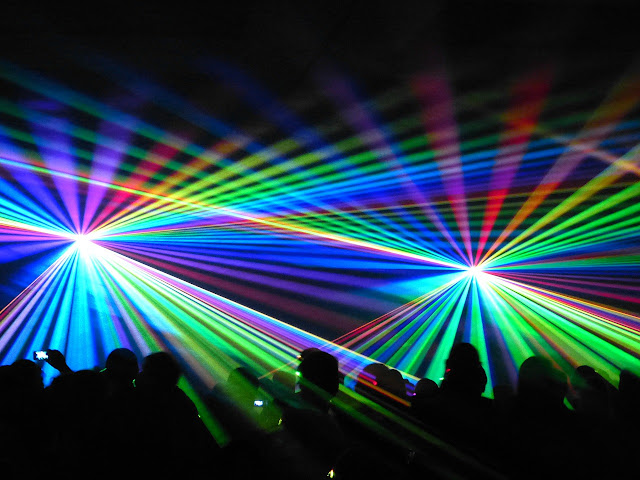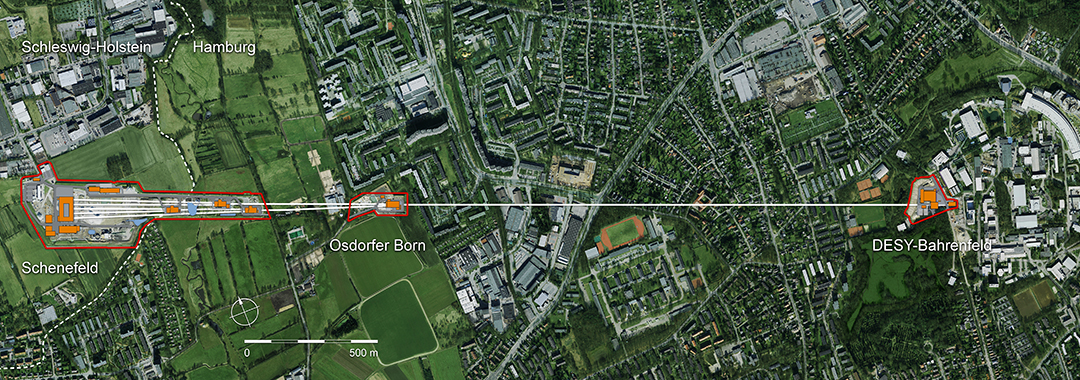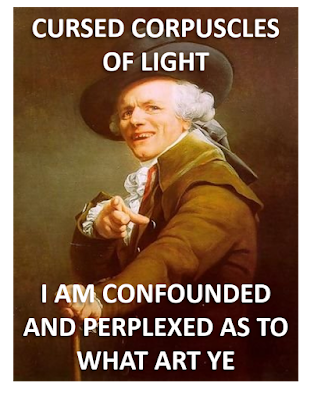Lasers are awesome, and I guess most people would agree since they have become so common. Anyone can buy a laser pointer with pocket change, and laser shows are used as attractions at night clubs. Blu-ray discs got their name from the type of lasers they are recorded and played with, and almost all production lines utilize lasers at some point. You can even get a car with
laser headlights!
But you know what kind of lasers are the most awesomest? The really big and powerful ones, and it doesn't get much bigger or more powerful than the European X-ray free electron laser, or European XFEL for short.
European XFEL is an incredible research facility housing one of the most ridiculous lasers ever made by human kind. It's a humongous device, stretching over a length of 3.4 kilometers underground, and it's construction cost is an estimated 1.22 billion euros.
The operation of the device sounds like it's taken straight from some sci-fi show. First, on the right side of the above map (at DESY), they begin by injecting electrons into a linear accelerator, that stretches out a total of 2.1 kilometers.
The linear accelerator consists of several cavities, which accelerate charged particles when an intense electric field is applied across them. The cavities are made from elemental Niobium, because it becomes superconducting at extremely low temperatures. To achieve superconductivity, they are chilled to 2 K with liquid helium.
Generally speaking, the more cavities you use, the faster electrons you can get. The European XFEL accelerator currently uses 768 cavities over a 1.7 km length, which produces electron beams with up to 17.5 GeV average electron energy. Electrons with such large energy move at a speed that is very close to the speed of light, and this can still be increased to 20 GeV in the future.
The accelerated electron beam is then fed into an undulator, that consists of a set of magnets that produce an oscillating magnetic field. Even the undulators are quite massive, with a length of 212 meters.
The magnetic field bends the electron beam, causing the electrons to lose energy in the form of electromagnetic radiation. The wavelength of the radiation depends largely on the speed of the electrons moving through the undulator, and the period of the magnetic field.
For example, if the period of the undulator is about 1 cm, then to get a wavelength of 1 nm the electrons have to move at a fraction of 0.9999998 from the speed of light. The European XFEL is capable of going all the way down to a wavelength of 0.05 nm.
That's incredibly small, about the same as
Bohr radius, which is basically the radius of the hydrogen atom. As such, it's theoretically possible to image
single atoms with XFEL radiation. The pulses are also rather short, less than 100 femtoseconds, short enough to capture the formation of molecules.
Moreover, the power and brightness of this laser is rather impressive at these wavelengths, to say the least. The average power of the optical output is just around 70 watts, but the peak power is a whopping 22 GW! At those powers, it can destroy anything, and it's 10 000 times brighter than the brightest conventional x-ray sources.
So what are sources like these used for? Some major uses are in material research, since x-rays can penetrate most materials with ease and they can produce images with unprecedented resolution. In the biology sector, they can be used for
crystallography to image proteins, since about 25 % of all proteins cannot be imaged with normal methods.





Comments
Post a Comment